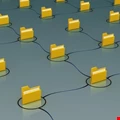Infosecurity Opinions

Comment: Is Your Office Printer Secure?
The once ‘humble’ office printer has developed into a networked communication hub with an inherent security risk if not managed correctly. Quentyn Taylor of Canon Europe discusses the importance of a comprehensive, overall security policy to minimize print security risks

Comment: Securing Data from the Threat of SQL Injection
As the value of an organization’s data continues to grow, Slavik Markovich at McAfee discusses what they can do to protect their IT systems and the information they hold

Comment: Mobile Device Security – What’s Coming Next?
James Lyne from Sophos believes that the mobile device revolution is quite possibly the most significant change in computing since the shift from the mainframe more than 20 years ago

Comment: Keeping VPNs Clean in the Era of Global Mobile Anarchy
IT managers need to avoid mobile anarchy while providing reliable, secure mobile access. It’s proving a challenge to strike the right balance without affecting performance and upsetting the workforce, observes Dell SonicWALL’s Andrew Walker-Brown

Government's Role in Information Security: Leave it to the Experts
Daniel R Walsh says those already tasked with protecting our information society are in the best position to create and implement any standards

Government's Role in Information Security: Involvement = Global Priority
Hord Tipton believes government has a significant role in developing and enforcing information security standards

Comment: File Sharing Opens the Box of Information Security
Sharing may be part of internet culture, but it does not sit well with data governance. David Reed of the Data Governance Forum argues that business executives need to be reminded of the rules

Comment: May the (En)Force(ment) Be With You – Security Lessons from Star Wars
From applying security policies to DLP and effective user authentication, there are many infosecurity lessons to be learned from the classic space opera. Terry Greer-King of Check Point shows how companies can avoid the Empire’s mistakes

Comment: Tackling the Geolocation Cookie Imperative
ISACA’s Ramsés Gallego discusses the new EU cookie legislation and the effect it will have on companies that provide location-based services

Comment: Public Sector Security – Time to Step into the Breach
Adam Evans of NetIQ looks at how public sector organizations can make sure that private data remains private

Comment: Enterprise Log Managers – An Unsexy, But Vital Tool
Representatives from ISACA and CA Technologies look at why enterprise log managers are an essential element of IT security that can also provide value through non-IT security use cases

Comment: There’s Much to Learn from Recent Data Security Breaches
SafeNet’s Jason Hart looks at what the security industry has learned from last year’s data breaches and reiterates the importance of encrypting all data to ensure comprehensive protection against the latest security threats

Comment: The Death of the CISO?
At a significant crossroads, the infosec profession must adapt to avoid failure says Mark Brown of Ernst & Young

Comment: Protecting Critical Network Systems and the Information Within
Benga Erinle, president of 3eTI, discusses the shift in focus from securing physical facilities to warding off cyber attacks against critical infrastructures – and why our reliance on control systems makes us more vulnerable than ever to attack

PCI in the Cloud: Ready, Willing and Able?
Andrew Hay discusses what you can expect from the ‘PCI compliant’ cloud provider

Token Debate: Battle Tested, Industry Approved
Their ability to remain nimble is why RSA’s Dan Schiappa believes tokens are the past, present, and future of two-factor authentication

Token Debate: Worthless, Worthless
This sums up the opinion of ISACA’s Richard Hollis when it comes to the value of token-based authentication

Comment: How Decentralized Encryption Can Impair Security
To protect digital assets and meet regulatory requirements, many organizations secure sensitive data with point encryption solutions. Vormetric’s Ashvin Kamaraju explains the risks and challenges associated with decentralized encryption key management, and the role of interoperability standards in establishing a centralized key management infrastructure

The Strange Case of Indian Censorship in Oman
Jean-Loup Richet explains how researchers in Canada have come across a new example of the “upstream filtering” phenomenon, in which internet content is blocked in one country due to censorship imposed by another

Comment: Effective Smart Grids Require Multiple Layers of Security from the Outset
Michelle Lewis, smart grid specialist at Symantec, explores the benefits and challenges of smart grids and outlines the strategies needed to secure and protect them



